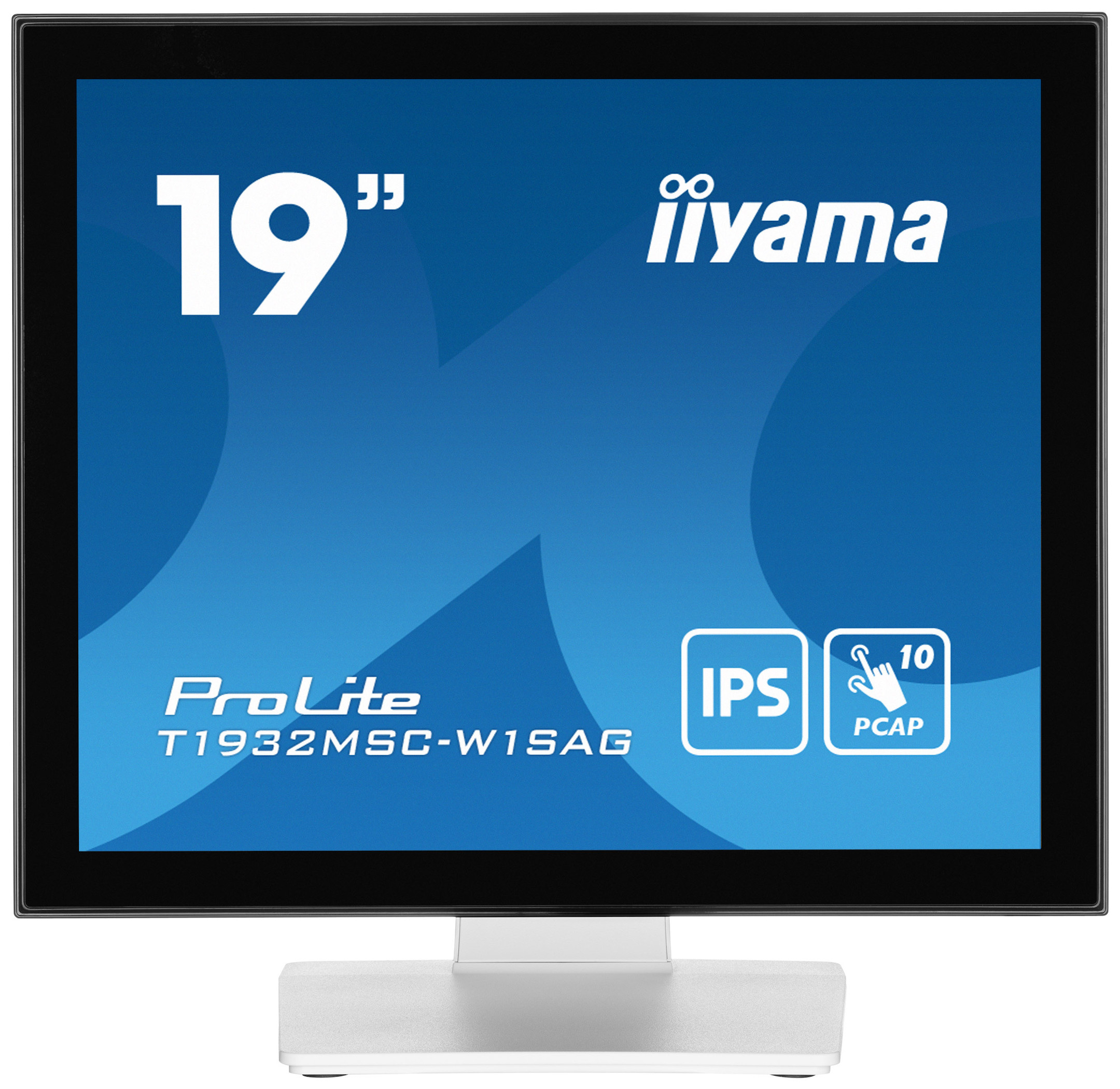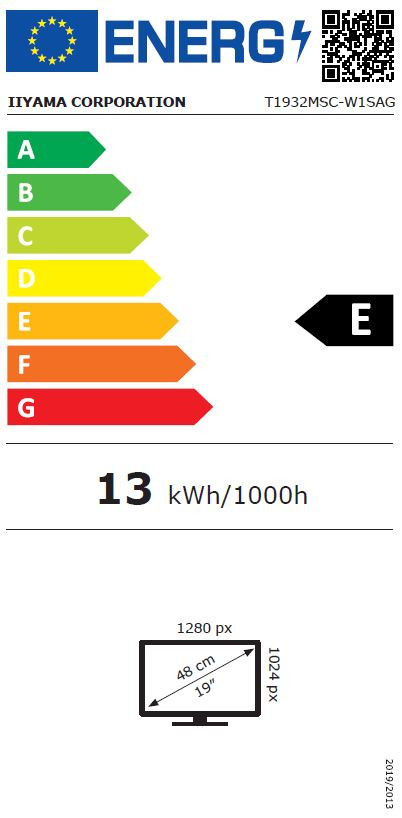



































































£498.86*
- Resolution 1280 x 1024 SXGA
- Diagonal 19"
- Panel type IPS
- Refresh Rate 80Hz



Product information
The multi-touch T1932MSC-W1SAG with a 19-inch screen diagonal (48 cm) works with PCAP touch technology, which guarantees maximum durability, impact and scratch resistance as well as perfect image quality thanks to a special glass coating. The touch function remains fully functional even if the display is scratched. Thanks to IPS panel technology, the device delivers accurate and uniform colour reproduction with a high viewing angle stability. The solid stand allows the touchscreen to be positioned stably and can be adjusted by 90 degrees for flexible use. In addition, the modern glass design offers an elegant finish with high light transmission right up to the very edge, guaranteeing perfect image quality and brilliant colours.
IPS
IPS displays are known above all for their wide viewing angles and natural, highly accurate colours. They are particularly suitable for colour-critical applications.
TOUCH TECHNOLOGY - CAPACITY
This technology uses a sensor network of microfine wires that are integrated into the glass surface. Touching the glass changes the electrical signals, allowing the touch position to be calculated and transmitted to the controller. The glass surface of this technology is extremely durable and the touch functionality remains unaffected, even if the glass is scratched. It offers perfect image reproduction and can be operated with fingers (even with latex gloves) or magnetic pens.
IP54
The IP code certification indicates how resistant the screen is under extreme conditions. With IP 54, the screen is resistant to dust and water splashes to a certain degree.
SRATCH RESISTANCE
Scratch resistance is essential for touch solutions used in public places and schools. This is achieved by a glass pane on the screen. It guarantees a long lifetime of the touch function and even more importantly, the touch function remains unaffected even if the glass is scratched.
AG COATING (ANTIGLARE COATING)
AG coating is used on professional displays to reduce reflections from external light sources that can affect colours, contrast and sharpness. It also makes the screen less susceptible to dust, grease and dirt particles
Technical data
| Name | iiyama T1932MSC-W1SAG 19" IPS Monitor, 1280 x 1024 SXGA, 80Hz, 14ms |
|---|---|
| Article number | 1000030376 |
| GTIN/EAN | 4948570122219 |
| Manufacturer SKU | T1932MSC-W1SAG |
| EPREL ID | 1519102 |
| Model name | T1932MSC-W1SAG |
| Brand | iiyama |
| Product Type | Monitor |
| Product Series | iiyama T Series |
| Technology | LCD |
| Panel type | IPS |
| backlight | Direct-LED |
| Resolution | 1280 x 1024 SXGA |
| Diagonal | 19" |
| Aspect Ratio | 5:4 |
| Viewing angle - Horizontal | 178° |
| Viewing angle - Vertical | 178° |
| Contrast Ratio | 1,000 :1 |
| Screen finish | Matt |
| Max. Brightness | 250 cd/m² |
| Response time | 14ms |
| Refresh Rate | 80Hz |
| Support - VESA | 100 x 100 |
| Inputs | 1x Displayport , 1x HDMI , 1x VGA |
| Outputs | 1x 3,5mm Jack |
| Features | Integrated speaker , Touch screen |
| Product width | 43.2 cm |
| Product height | 41.35 cm |
| Product depth | 23.95 cm |
| Weight | 5.4 kg |
| Colour | White |
| EEK Spectrum | A to G |
| Energy efficency class | E |
| Delivery contents | DisplayPort Cable , HDMI Cable , Power cable , USB cable |
| Condition | New |
| Warranty | 24 Month |
| Warranty type | Bringin service Service and support information |
Product safety
| Person responsible for the EU |
|---|
| iiyama International Corporate |
| Wijkermeerstraat 8 |
| 2131 HA Hoofddorp |
| Netherlands |
| info.de@iiyama.com |



